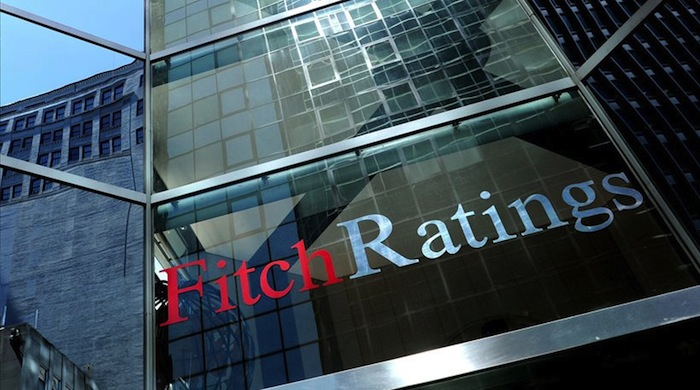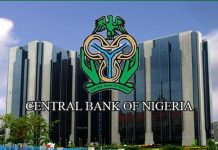Fitch Ratings has revised the outlook on Nigeria’s long-term foreign currency issuer default rating (IDR) to ‘Negative’ from ‘Stable,’ but affirmed the country’s rating at ‘B+’.
This comes about two weeks after Moody’s, another global rating agency also changed the country’s outlook from ‘Stable’ to ‘Negative.’
In a statement obtained from its website yesterday, Fitch explained that the outlook revision on Nigeria reflected the increasing vulnerability from the current macro-policy setting, raising risks of disruptive macro-economic adjustment in the medium term amid continued real appreciation of the naira.
It noted that Nigeria’s medium-term economic outlook was subdued. Fitch also projected an average Gross Domestic Product (GDP) growth of 2.4 per cent for the country between 2019 and 2021. This, it stated would be well below the ‘B’ median of 3.4 per cent and the five-year average demographic growth rate of 2.7 per cent.
“The prospects for supply-side, fiscal and exchange-regime reforms that could tackle the major constraints for Nigeria’s credit profile are weak, as reflected by the record in recent years. Emerging rivalries within the ruling APC party, possibly sparked by early dissensions over the 2023 succession to president Buhari, could hamper policy-making,” it stated.
It stated that Nigeria’s current account (CA) balance has shifted to deficit from a long-standing surplus, pointing to deteriorating macroeconomic imbalances and adding to external vulnerability.
Fitch anticipated that the CA in Nigeria would record a deficit of 1.6 per cent of GDP in 2019, its second-weakest level in 24 years, after a surplus of 2.6 per cent in 2018.
“Fitch forecasts the CA deficit will moderate to an average of 0.7 per cent of GDP in 2020-2021,” it stated.
“General government (GG) debt remains on an upward path, while particularly low fiscal revenues and structural shortcomings in public finance management (PFM) constrain the sovereign’s ability to support a rising debt burden. The GG debt/revenue ratio is particularly high, at 333% (Federal government (FGN), debt: 777%) in 2019, and will rise close to 400 per cent (FGN debt: 922%) in 2021, well above the forecast ‘B’ median of 248 per cent.
“GG debt will exceed 30 per cent of GDP (FGN debt: 24%) in 2020, trebling in a decade, and up from 25 per cent (FGN debt: 20%) in 2018 which was already its highest level since the restructuring of the Paris Club debt in 2004.
“Weaknesses in PFM are illustrated by rising monetary financing, a large and uncertain amount of government arrears, and a multitude of contingent liabilities on which transparency is poor. Net CBN claims on the FGN soared to an all-time high of three per cent of GDP in August, equivalent to annual FGN revenues.
“Significant arrears continue to undermine the viability of the power sector despite large injections of funds by the CBN and the budget authorities. Domestic arrears of NGN3.4 trillion (2% of GDP), according to preliminary estimates, are being cleared through the issuance of promissory notes. This amount does not capture pension and wage arrears reportedly owed by different tiers of government,” the rating agency added.
According to the rating agency, a sharp devaluation of the exchange rate under the current policy framework could stoke macroeconomic volatility and significantly weaken some of Nigeria’s key credit metrics, including its GDP per capita in United States dollars and its share in world GDP.
“The substantial real appreciation of the naira over the last year appears uncorrelated with macroeconomic fundamentals and is set to continue, driven by high inflation. Commodity terms of trade have deteriorated somewhat and will decline further, weighed down by lower oil prices.
Fitch argued that risks stem from the Central Bank of Nigeria’s (CBN) policy of attracting portfolio investments in its short-term open market operations (OMO) bills through high yields and hedging instruments offered to non-resident investors at low cost, despite a wide spread between the naira and dollar interest rates.
It put the value of non-resident holdings of the CBN’s OMO bills as at the end of August at $17 billion.
The central bank has recently barred non-bank residents from participating in the OMO market, and separately imposed a floor on bank loan-to-funding ratios to support credit growth.
“Low non-oil fiscal revenues are a key credit weakness, and are unlikely to improve significantly in the medium term in light of the slow progress on fiscal reforms. Public finances are highly dependent on hydrocarbon revenues, which account for 45 per cent of GG revenues and are exposed to risks of disruption to production from vandalism or other force majeure affecting Nigeria’s aging oil infrastructure.
“Break-even oil prices are high, at around $144/barrel on our estimates, and a $10 change in oil prices around our baseline would affect the budget balance to the tune of 0.5 per cent of GDP.
The global rating agency predicted a stable Nigerian oil production volume of 2.14 million barrels per day (mmbpd, including condensates) over 2019-2021, against a 2019 budget assumption of 2.3 mmbdp and a 2020 budget assumption of 2.18mbpd. The agency also projects Brent oil prices to average USD65/barrel in 2019 (FGN budget: USD60), USD62.5/barrel in 2020 (FGN budget: USD60) and USD60/barrel in 2021.
Fitch projected inflation would average 13 per cent between 2020 and 2021 from 11.3 per cent in 2019, well above the forecast ‘B’ median of five per cent.
“The acceleration will be driven by a host of recently enacted policy measures which will compound price pressures from exogenous cost-push factors. These measures include the upcoming raise of the VAT rate, significant salary increases following the 66.7 per cent hike of the minimum wage in April, as well as the recent closure of land borders to foreign trade and tightening restrictions on FX financing for a wide range of imports,” it added.
Source: THISDAY














